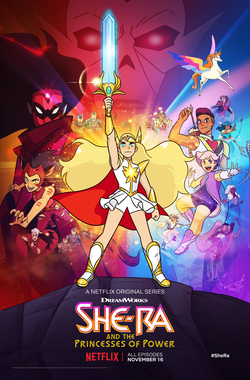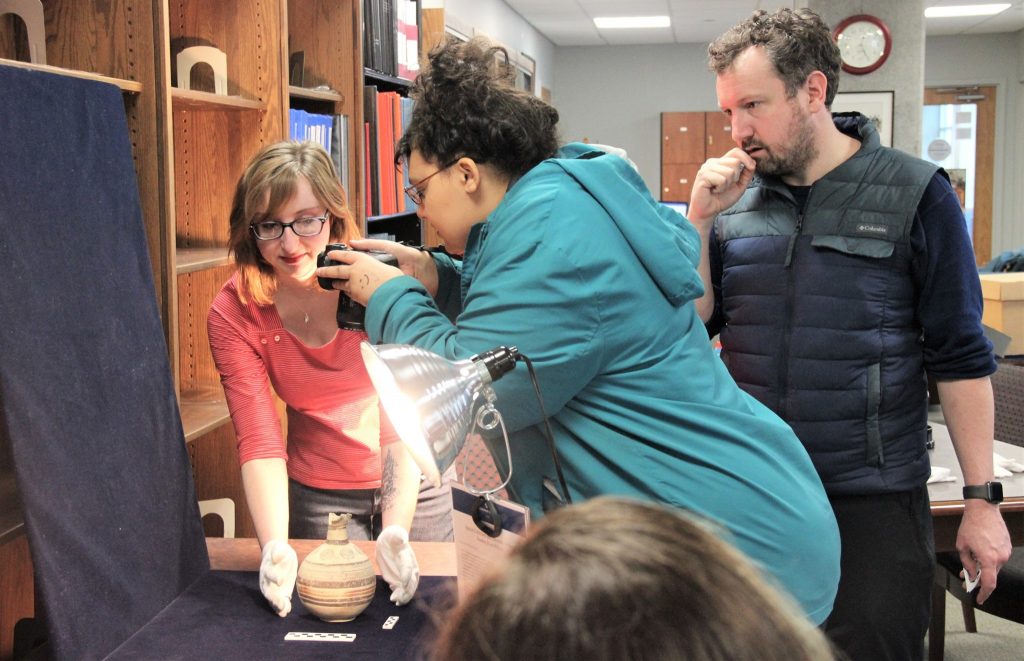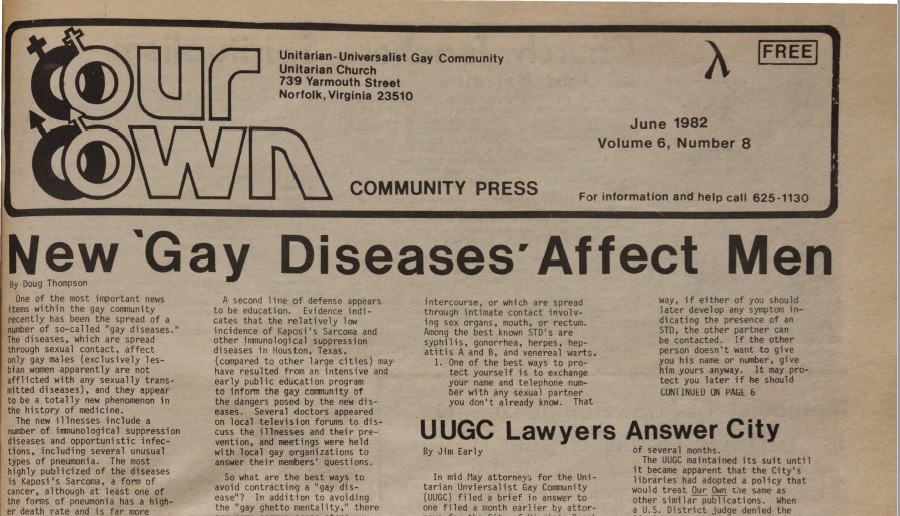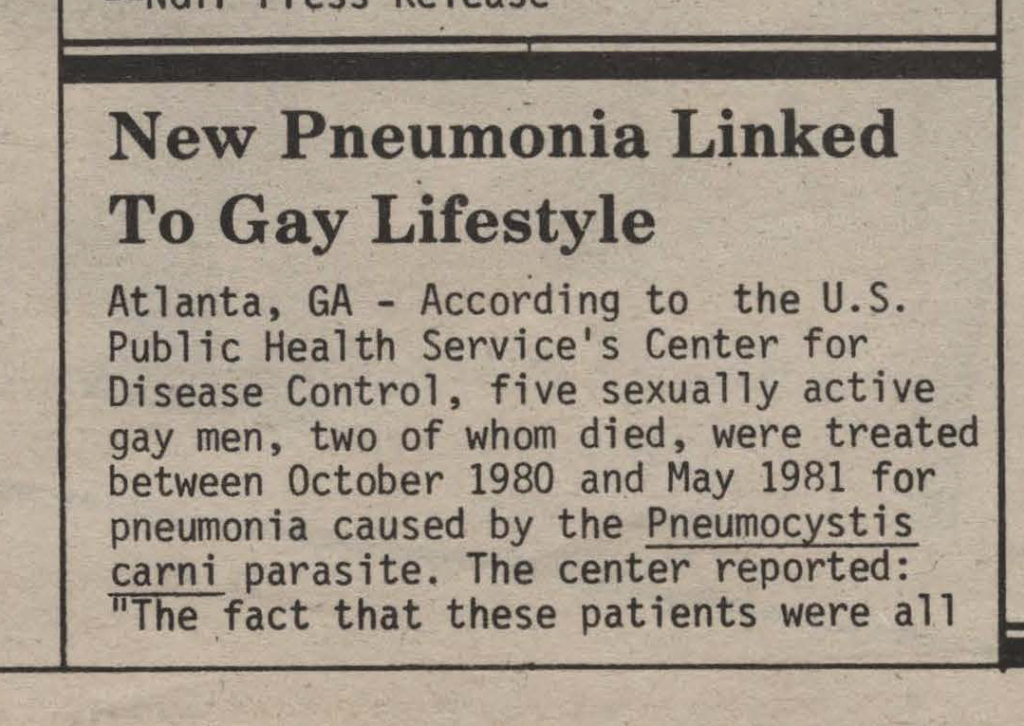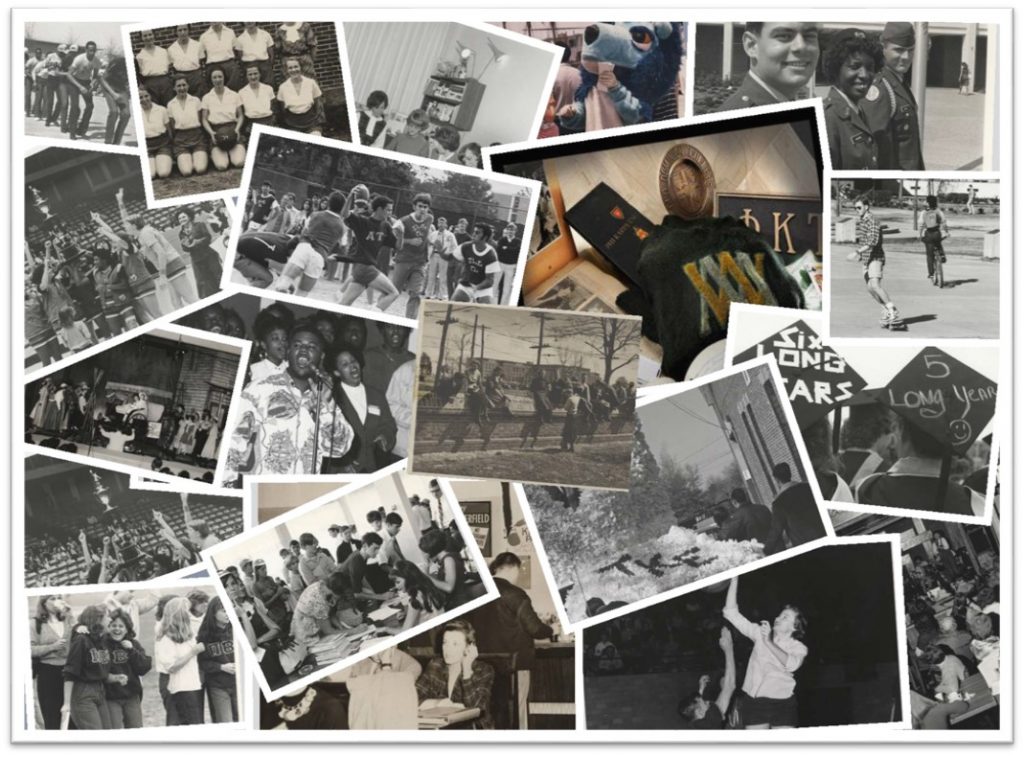By Mel Frizzell, Special Collections Assistant
April 10, 1988 marks the founding and first official meeting of the Gay and Lesbian youth group, Youth Out United (Y.O.U.), at the Unitarian Church of Norfolk, Virginia. I had the privilege of belonging to this group when I was in college, so this blog post is not only historical, but personal.
Y.O.U. was a group for gay and lesbian teens and young adults up to the age of 25. The group was originally founded as simply the “Gay / Lesbian Youth Group” in April 1988. By summer, the group had an official name U.G.L.Y (United Gay and Lesbian Youth) and had moved to what was known as the Pritchard Building at the corner of Olney and Granby Street in Norfolk. I discovered the group in January or February 1989 – my second semester of college at ODU. Not long after I arrived, members decided to change the name of the group to Youth Out United and meetings moved back to the Unitarian Church where they would remain for several years.
The name change was brought on by a concern that “U.G.L.Y.” sent the wrong message to youth who may already have issues with their self-esteem for being gay. Moving to the Unitarian Church gave the group more legitimacy and visibility, especially since the office of Our Own Community Press was just next door to our meeting room. The youth group itself had no official connection to the Unitarian Church other than meeting there.
One of the things that always impressed me about the group, even to this day, was that this group was self-run by the youth themselves. When visiting other cities, LGBTQ youth groups were almost always run by institutions such as LGBTQ community centers. Here in Norfolk, the youth group was self-run and self-organized. A slogan for the group was “For YOU, by YOU.” It was the youth themselves who created the organization, came up with a constitution and by-laws, set up officers, and even created a board of advisors from the local LGBTQ community. In a lot of ways, we felt we were on our own to do this. Times were different than they are today, and many “adults” in the community were concerned about helping out youth – both due to stigma and possible legal issues. This was long before gay-straight alliances began appearing in high schools.
Meetings were on Sunday afternoons and often there was a topic of discussion. Sometimes we brought in guests to speak and other times we talked as a group about specific topics of interest. After the meetings, we usually had dinner at the College Cue Club, a gay club adjacent to the ODU campus. Y.O.U. was much more than the weekly meetings and dinners though. Members actually got involved in the local community and local activism. Some members took part in the March on Washington for gay rights. Some members went on a local talk show. To build community (and to raise funds), we had spaghetti dinner fundraisers at the Unitarian Church and we also had roller skating parties at a local skating rink. One of our members made the news by taking his boyfriend to his high school prom.
Those days were filled with mostly happy memories. Eventually, I passed the age of 25 and had to move on. Many of the people from the group I still count fondly as friends, even if I don’t see them as much anymore. As for the group, it eventually became an outreach program under the Tidewater AIDS Crisis Taskforce (TACT) in the late 1990s or early 2000s. TACT became Access AIDS Care which eventually birthed the LGBT Life Center of Hampton Roads. As of last year, the LGBTQ youth group still met at the LGBT Life Center as Y.O.U. As of this post, the group is listed on their website as YOUth Matter.
You can find out more about Youth Out United, the College Cue Club, Tidewater AIDS Crisis Taskforce, and many other topics listed in this post by browsing the Our Own Community Press digital collection at:
https://dc.lib.odu.edu/digital/collection/ourown/
ODU Special Collections and University archives also has related materials in the following collections:
- Unitarian Universalist Church of Norfolk — http://www.lib.odu.edu/archon/?p=collections/controlcard&id=360
- Charles H. Ford Papers — http://www.lib.odu.edu/archon/?p=collections/controlcard&id=57
- ODU Gay and Lesbian Student Union — http://www.lib.odu.edu/archon/?p=collections/controlcard&id=184
Please note these other collections are not available digitally and are not available during the current COVID-19 shutdown, so please schedule a visit when we eventually reopen.











